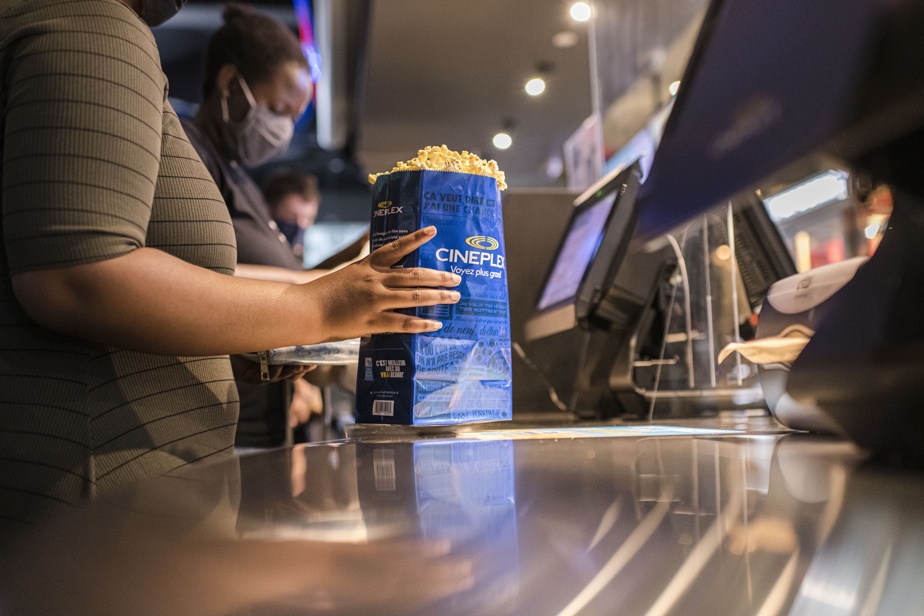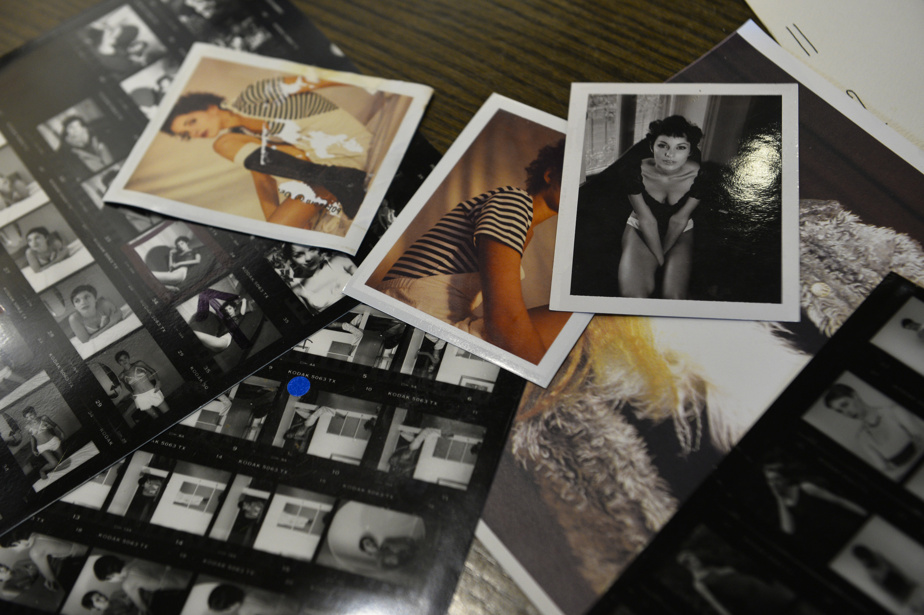Interaction

PHOTO YVES HERMAN, ARCHIVES REUTERS
Being served a “Hello!” at the entrance to a boutique “can increase sales by up to 10%,” notes Jean-Marc Léger, president of the Léger firm.
The decision to buy or not in store is not just a matter of price: interaction with employees is essential. The marketing research firm Léger even managed to quantify this aspect in its WOW customer experience study conducted last fall. First example: being served a “Hello!” ” at the entrance. “If followed by good in-store service, it can increase sales by up to 10%,” notes Jean-Marc Léger, President.
It was with a similar observation established by Léger that the president of the Société des alcools du Québec, Gaétan Frigon, had made the commercial shift of the state corporation between 1998 and 2003. “We had shown that a customer who enters at the SAQ and who does not speak to anyone bought an average of $32 worth of wine, indicates Mr. Léger. If he asked for information, the average purchase increased to $45 and if the staff proactively offered new bottles, the sale increased to $64. »
Another unusual observation: customers buy in a proportion of 76% when they perceive that employees are happy, engaged and passionate about their work. Without this perception, the conversion rate is only 64%. These discoveries are particularly important in Quebec, specifies the president of Léger, where two-thirds of purchases at the supermarket are spontaneous, compared to one-third in the rest of Canada. “The influence of in-store marketing is much more effective with Quebec consumers than with the rest of Canada,” he believes.
Anchoring

PHOTO CHRISTOPHER KATSAROV, THE CANADIAN PRESS ARCHIVES
Who buys a medium format popcorn at the cinema that costs $7.50, while the large format is offered at $8.50? In fact, the medium format serves as a “decoy” to make the large format more interesting.
Who buys a medium format popcorn at the cinema that costs $7.50, while the large format is offered at $8.50? Why that $150 bottle of wine at the restaurant, when most bottles sell for $40-$60?
In these two examples, we are not really aiming to sell the pop corn medium size and the bottle overpriced. They are what we call in marketing “decoys”, applied in a psychological concept described as early as 1974 as “anchoring”. It’s about the difficulty of getting rid of a first impression – the big size popcorn is really a bargain, the other bottles of wine seem cheap – that will strongly influence our purchasing decision.
In 2003, a researcher at the Massachusetts Institute of Technology, Drazen Prelec, demonstrated this psychological bias to the point of absurdity: 55 students were invited to an auction where they had to write down their last two social security numbers, then the price that they were willing to pay for one of the items. The higher their last two social security numbers, the more they were willing to pay at auction, up to 346% more.
Labyrinth

PHOTO ARIANA CUBILLOS, ASSOCIATED PRESS ARCHIVES
Since Victor Gruen’s first concept, shopping centers have been designed as labyrinths that aim to confuse the customer.
Do you easily get lost in shopping malls? Don’t worry, it’s intentional, and the phenomenon is even called the “Gruen effect”, or “Gruen transfer”. Austrian architect Victor Gruen was responsible for Minnesota’s first indoor, enclosed, air-conditioned shopping center in 1956. The concept of an enclosed, labyrinthine space, including attractions and restaurants as well as shops, survived until today. It has the effect of disorienting the customer to the point where he no longer remembers his initial purchase intention, hence this notion of transfer. Victor Gruen, by the way, publicly disavowed its creation in 1978, considering that it had been “bastardized”, he who originally planned to make it a community place where the stores would have been integrated into dwellings, clinics, schools and parks.
The mechanics of the Gruen effect are similar to what happens in supermarkets, notes Jean-Marc Léger. “The majority of consumers follow the same in-store customer journey, walk down the same aisles and stop at the same places every time they shop. The key is to disturb the consumer and lure him into another section of the store to show him other products. »
Sound and light

PHOTO HUGO-SÉBASTIEN AUBERT, LA PRESSE ARCHIVES
Ronald Milliman, a retired marketing professor from Western Kentucky University, discovered as early as 1982 that slow music played in a supermarket caused customers to walk slower and buy more.
In 1999, three researchers, North, Hargreaves and McKendrick, published a disconcerting study, The effect of in-store music on wine selections. Experimentally, they established that playing French or German music greatly influenced the choice of customers in a boutique specializing in wines: they were then more likely to choose a local wine from which a song was played. When questioned, customers maintained that they had not even noticed the origin of the music broadcast.
Ronald Milliman, a retired marketing professor from Western Kentucky University, discovered as early as 1982 that slow music played in a supermarket caused customers to walk slower and buy more. Conversely, upbeat music makes customers feel more rushed and they won’t linger for as long in a fast food restaurant.
And the fact is well established, “Christmas music increases sales, and it’s quantified,” says Luis Areas, vice-president, channel strategy and business development, at the Cartier agency.
He also notes, on another sensory level, that the choice of lighting is very important for the customer, even if he does not realize it. “From experience, we know that. The angle of the light beams will highlight certain products. Cooler light will make you look more tired. And the lights are dimmed in restaurants, to give more space to smell and taste. Everything is calculated. »
Nostalgia

PHOTO ARCHIVE THE SUN
Researchers at the Grenoble School of Management in France found that by putting subjects into a nostalgic state, they were less attached to money and, thus, more spendthrifts.
One of the strongest marketing techniques is the use of nostalgia, says Arnaud Granata, president of the Infopresse group. “Family get-togethers, reminders of childhood, Santa Claus, all of this is used to encourage purchase. We see it a lot in advertising, it’s a technique that comes up year after year. »
The fact that nostalgia pays seems difficult to demonstrate. Researchers at the Grenoble School of Management in France succeeded in doing so in 2014. They conducted six experiments, asking their subjects, for example, to think of happy memories or to describe an event from their past. Those who were in a nostalgic state turned out to be less attached to money and, thus, more spendthrift.
Nostalgia is also and often in the holiday season to dive back into old films in which, paying combination, the advertising placement is sometimes far from being subtle. “This kind of placement is not left to chance, the power of influence of a film on our purchases is enormous”, considers Luis Areas, of the Cartier agency.
Learn more
-
- 5%
- It’s the proportion of buying decisions that are made consciously, according to neuromarketing author Roger Dooley. The rest would be unconscious.
source : 100 ways to persuade and convince consumers with neuromarketing, Brainfluence2011
- 84%
- Percentage of customers willing to pay $10 more for Nike shoes when they were in a nice-smelling room, according to a famous study by neurologist Alan Hirsch.
source : Preliminary Results of Olfaction Nike Study1990
-
- $3.70
- In restaurants, removing the “$” sign from menu prices made diners spend US$3.70 more per meal, on average, according to a study by the Cornell University School of Hotel Administration.
source: Effects of Menu-price Formats on Restaurant Checks, 2009
